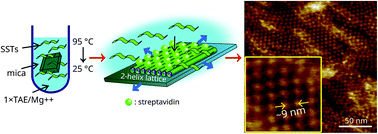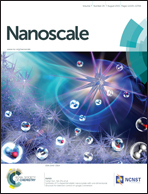Substrate-assisted 2D DNA lattices and algorithmic lattices from single-stranded tiles†
Abstract
We present a simple route to circumvent kinetic traps which affect many types of DNA nanostructures in their self-assembly process. Using this method, a new 2D DNA lattice made up of short, single-stranded tile (SST) motifs was created. Previously, the growth of SST DNA assemblies was restricted to 1D (tubes and ribbons) or finite-sized 2D (molecular canvases). By utilizing the substrate-assisted growth method, sets of SSTs were designed as unit cells to self-assemble into periodic and aperiodic 2D lattices which continuously grow both along and orthogonal to the helical axis. Notably, large-scale (∼1 μm2) fully periodic 2D lattices were fabricated using a minimum of just 2 strand species. Furthermore, the ability to create 2D lattices from a few motifs enables certain rules to be encoded into these SSTs to carry out algorithmic self-assembly. A set of these motifs was designed to execute simple 1-input 1-output COPY and NOT algorithms, the space-time manifestations which were aperiodic 2D algorithmic SST lattices. The methodology presented here can be straightforwardly applied to other motifs which fall into this type of kinetic trap to create novel DNA crystals.


 Please wait while we load your content...
Please wait while we load your content...